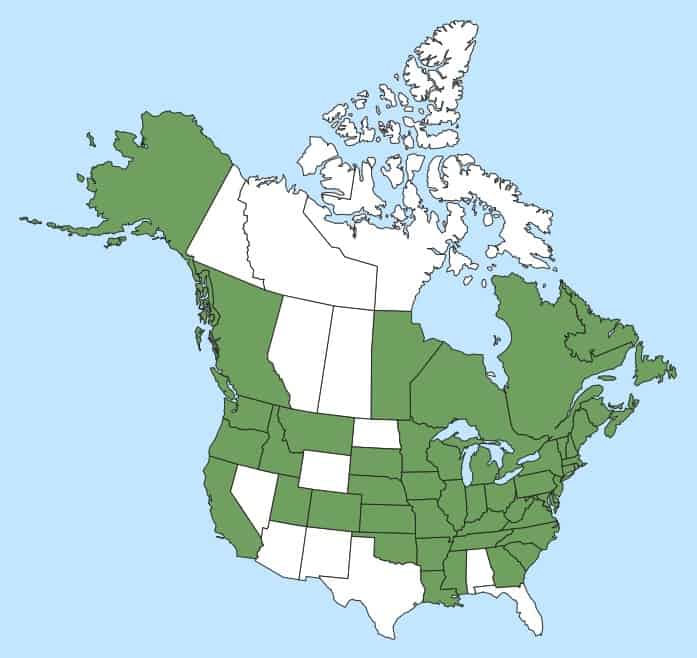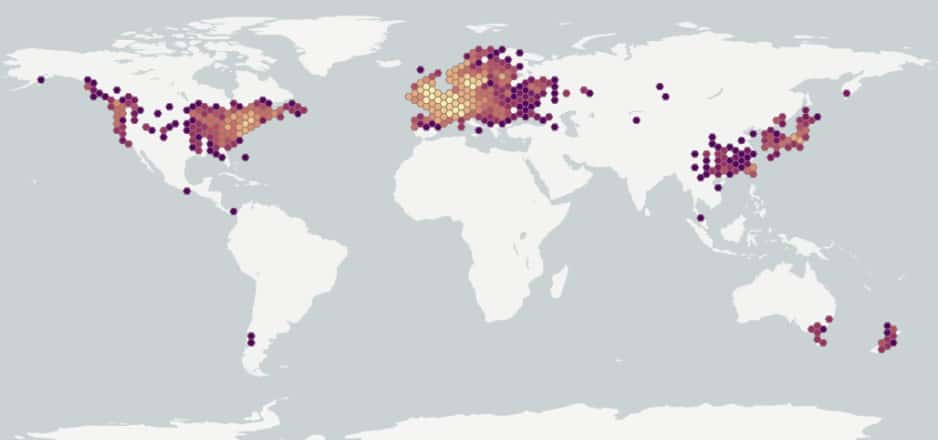Reynoutria japonica
Explore More :
Explore plus :
Overview
Aperçu
Regulation :
Remarques Réglementation:
- Quarantine lists of countries e.g. India *may be updated without notice
Regulation Notes:
On quarantine lists of countries e.g. India*.
*Quarantine lists of countries may be updated without notice.
Distribution :
Répartition :
Japanese knotweed is native to eastern Asia (USDA-ARS 2017). Introduced to Australia, Europe, North and South America (USDA-ARS 2017). In the United States, it is present in every state except: Alabama, Arizona, Florida, Nevada, New Mexico, North Dakota, Texas and Wyoming (USDA-NRCS 2017).
Habitat and Crop Association :
Habitat et Cultures Associées :
Japanese knotweed occurs in old fields, gardens, hedgerows, shores, water-course banks, forest edges, thickets, roadsides railway rights-of-way and disturbed areas (Darbyshire 2003; Barney et al. 2006).
Economic Use, cultivation area, and Weed Association :
Utilisation économique, zone de culture et association de mauvaises herbes :
Duration of Life Cycle :
Durée du cycle vital:
Perennial
Dispersal Unit Type :
Type d’unité de dispersion :
Achene, with or without a perianth
General Information
RENSEIGNEMENTS GÉNÉRAUX
This species is a rhizomatous weed, especially problematic along riparian corridors, roads, and railways (Barney et al. 2006). It spreads locally from rhizomes and more broadly from seed, stems and/or rhizome fragments in soil and water (Barney et al. 2006).
A fertile hybrid between Japanese and giant knotweed has been observed in Canada. Bohemian knotweed has been recorded in disturbed places in: BC, ON, QC, NS and NL (Brouillet et al. 2017). The plants have features intermediate to the parent species, and reproduces largely vegetatively (FNA 2017).
.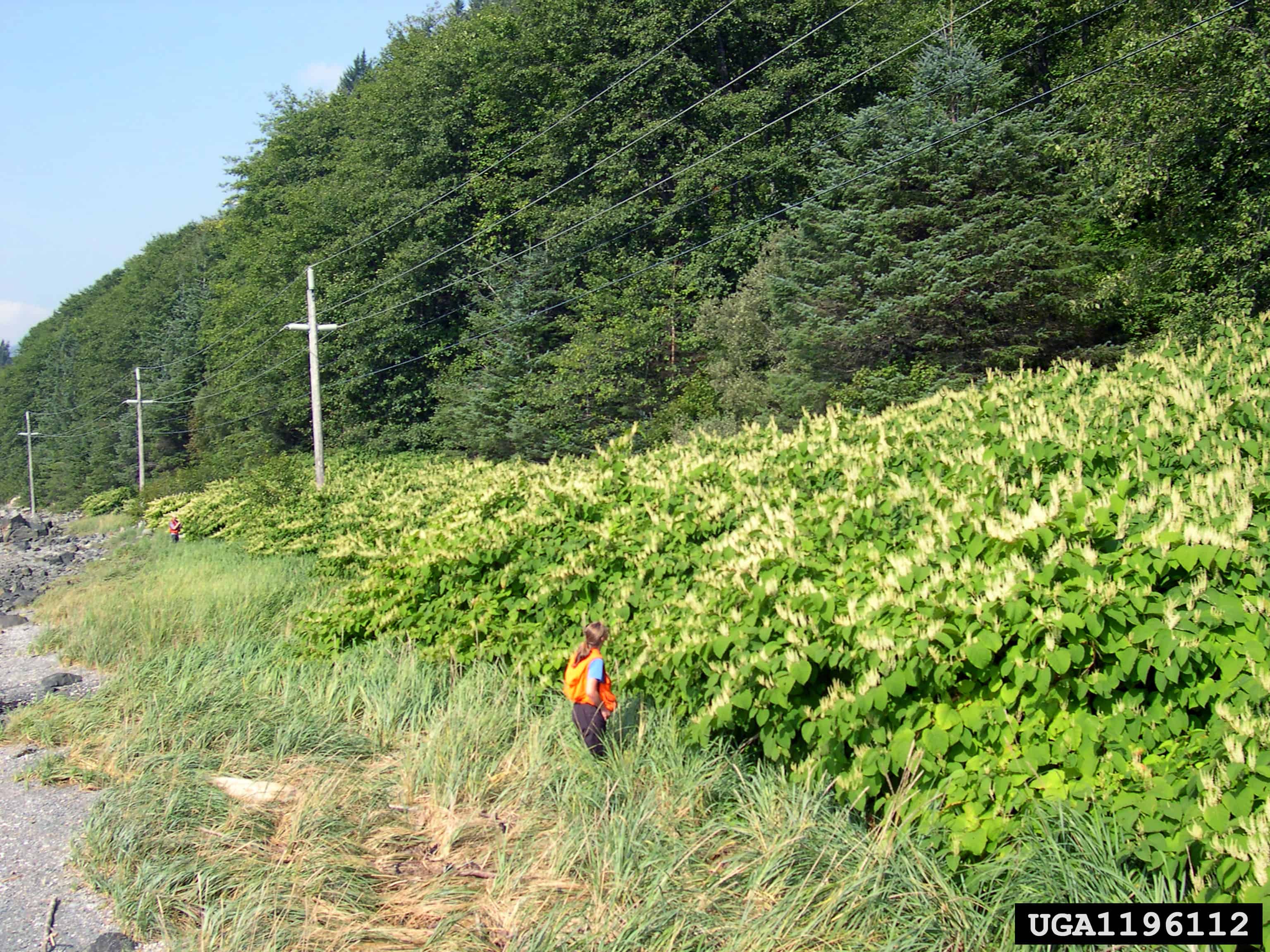
Reynoutria japonica infestation (Tom Heutte, USDA Forest Service, Bugwood.org)
Identification
Identification
-
Perianth
Size
- Perianth length: 6.7 – 9.7 mm (average: 8.2 mm); width: 3.2 – 7.3 mm (average: 5.2 mm)
Shape
- The perianth is trigonous and has prominent winged margin
- The perianth is teardrop-shaped
Colour
- The perianth is light reddish-brown or pale
Other Features
- Perianth remnants often remain on one end of the achene if the perianth is removed
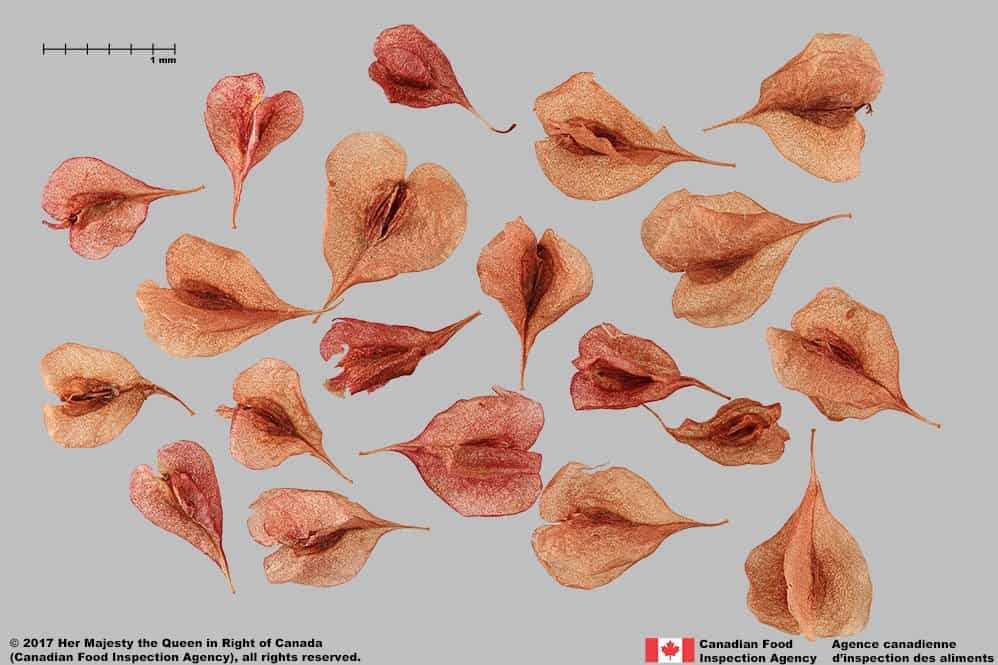
Japanese knotweed (Reynoutria japonica) perianths

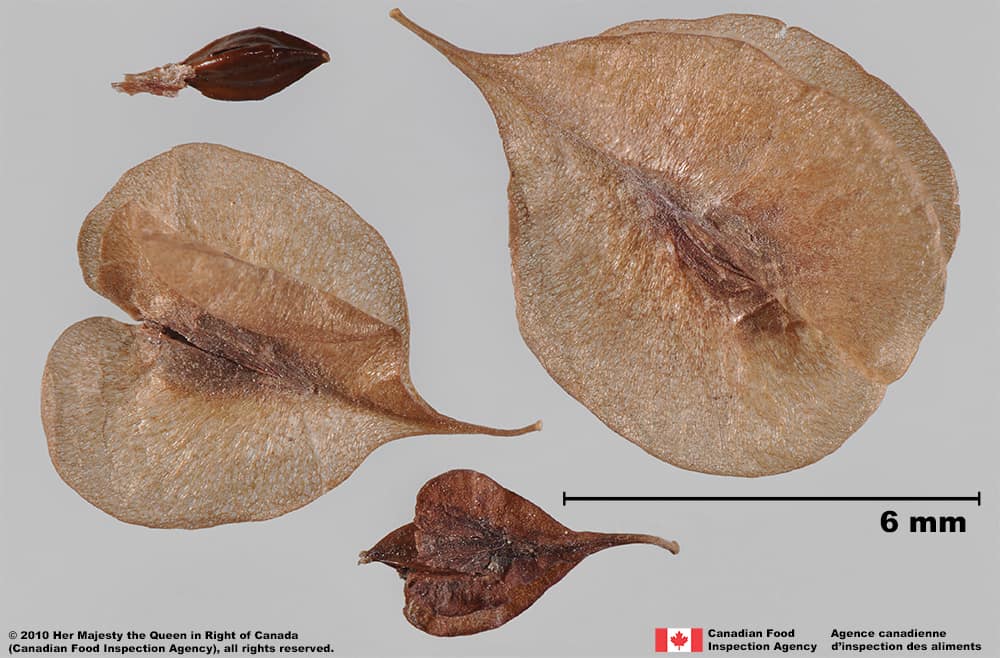
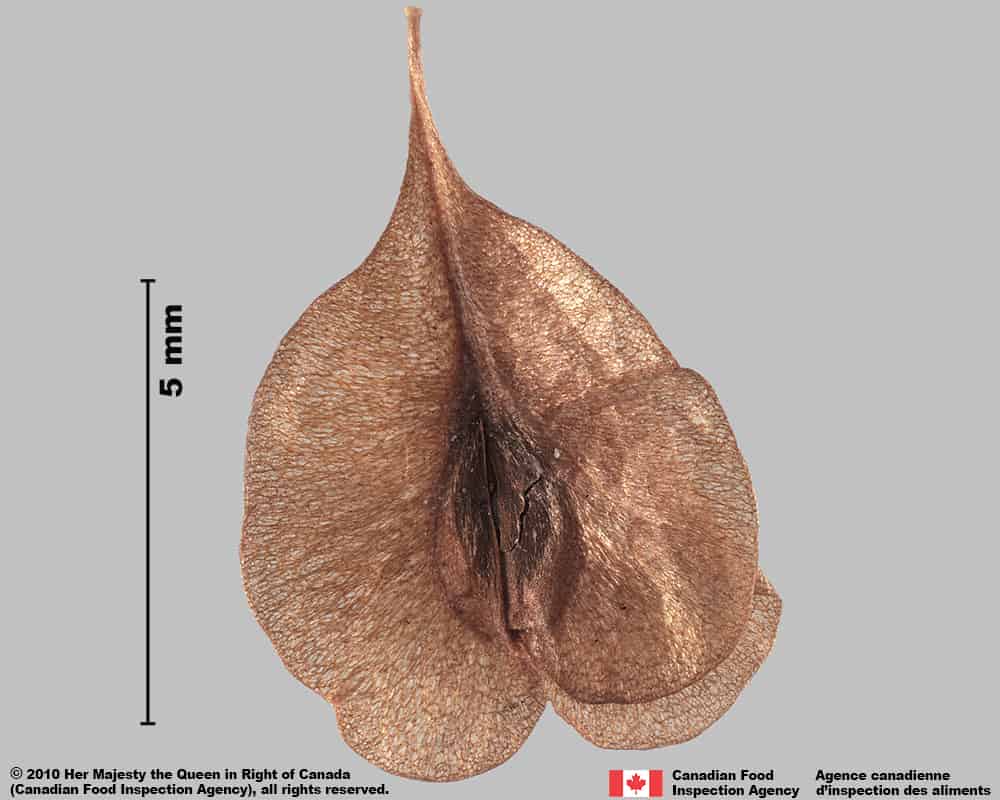
-
Achene
Size
- Achene length: 2.4 – 3.0 mm (average: 2.7 mm); width: 1.2 – 1.5 mm (average: 1.4 mm)
Shape
- The achene is trigonous
- The ends of the achene are pointed
Surface Texture
- The achene surface is smooth
Colour
- The achene is a glossy, medium brown
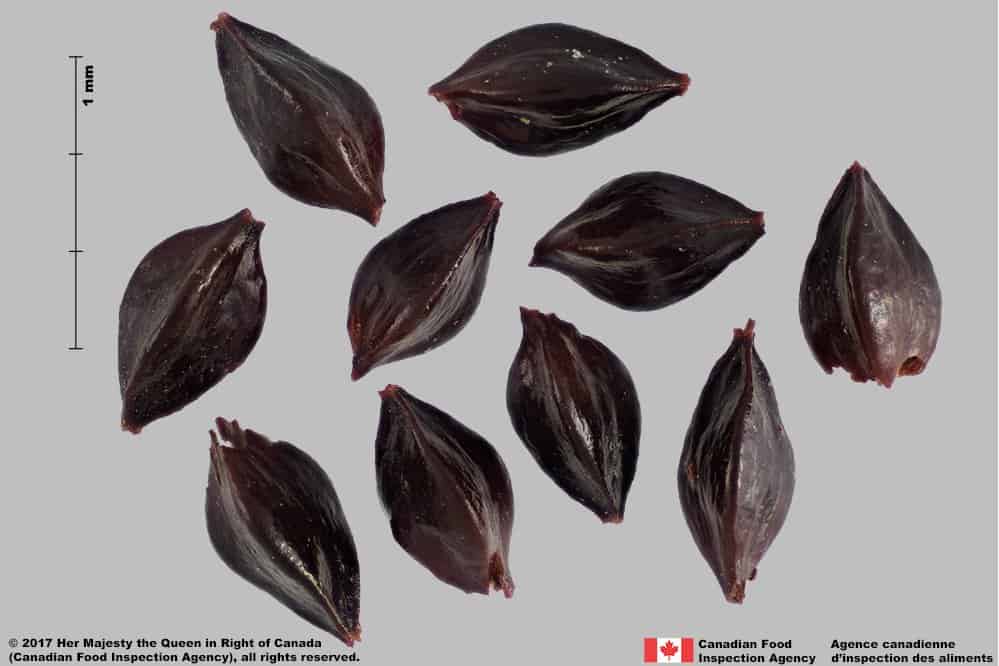
Japanese knotweed (Reynoutria japonica) achenes

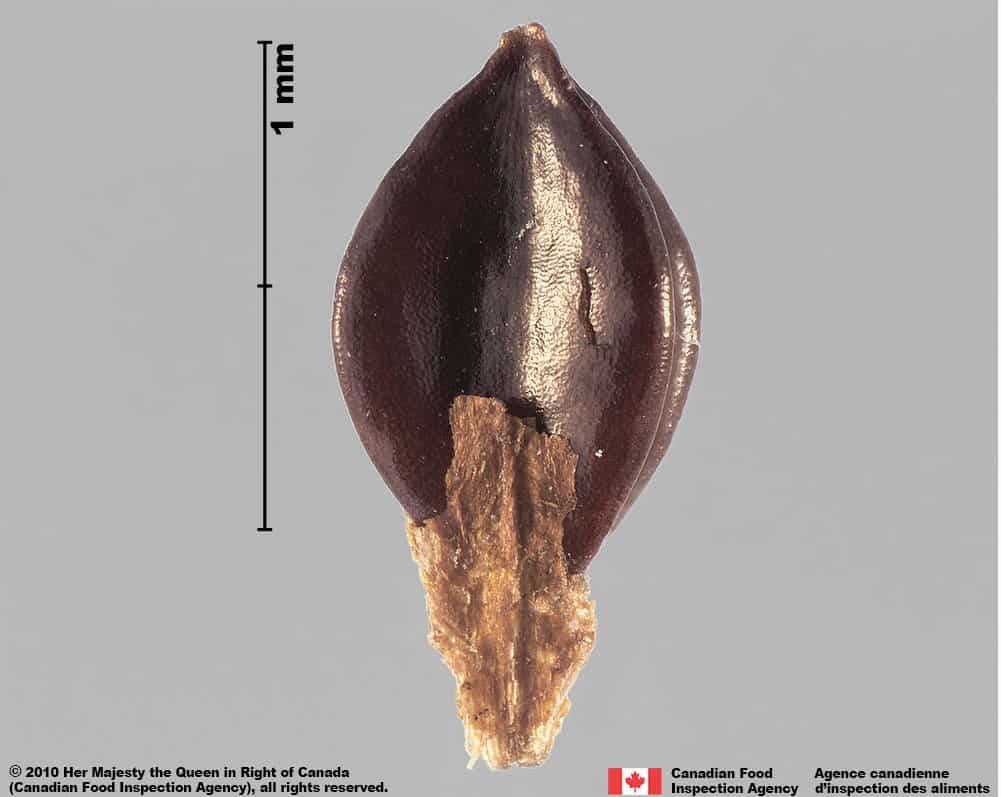
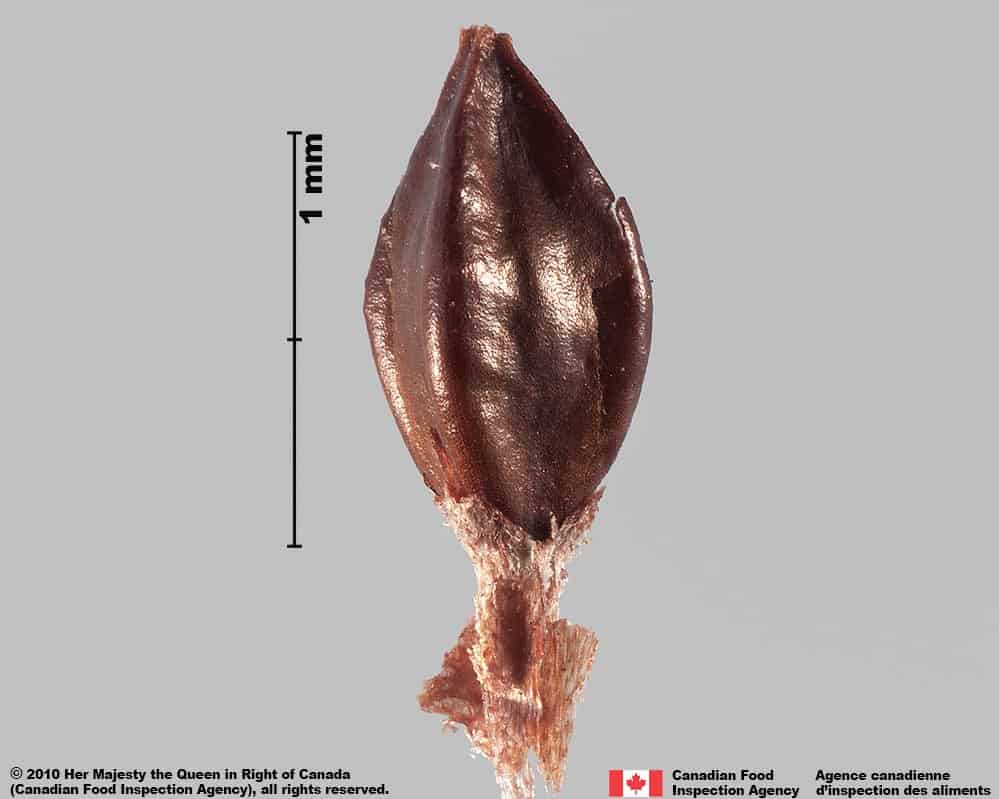
Identification Tips
CONSEILS POUR L’IDENTIFICATION
Additional Botany Information
AUTRES RENSEIGNEMENTS BOTANIQUES
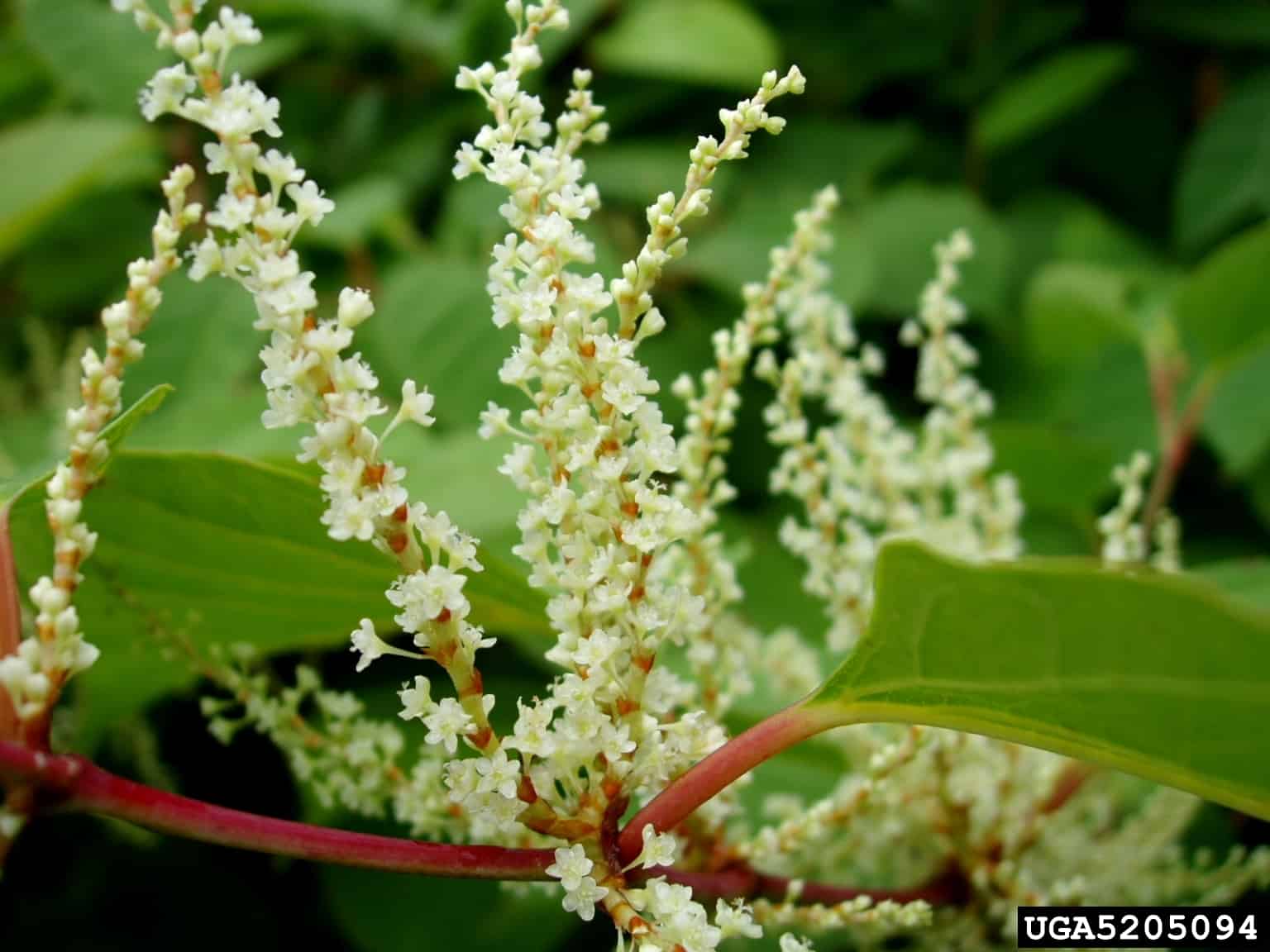
Reynoutria japonica flowers (Jan Samanek, Phytosanitary Administration, Bugwood.org)

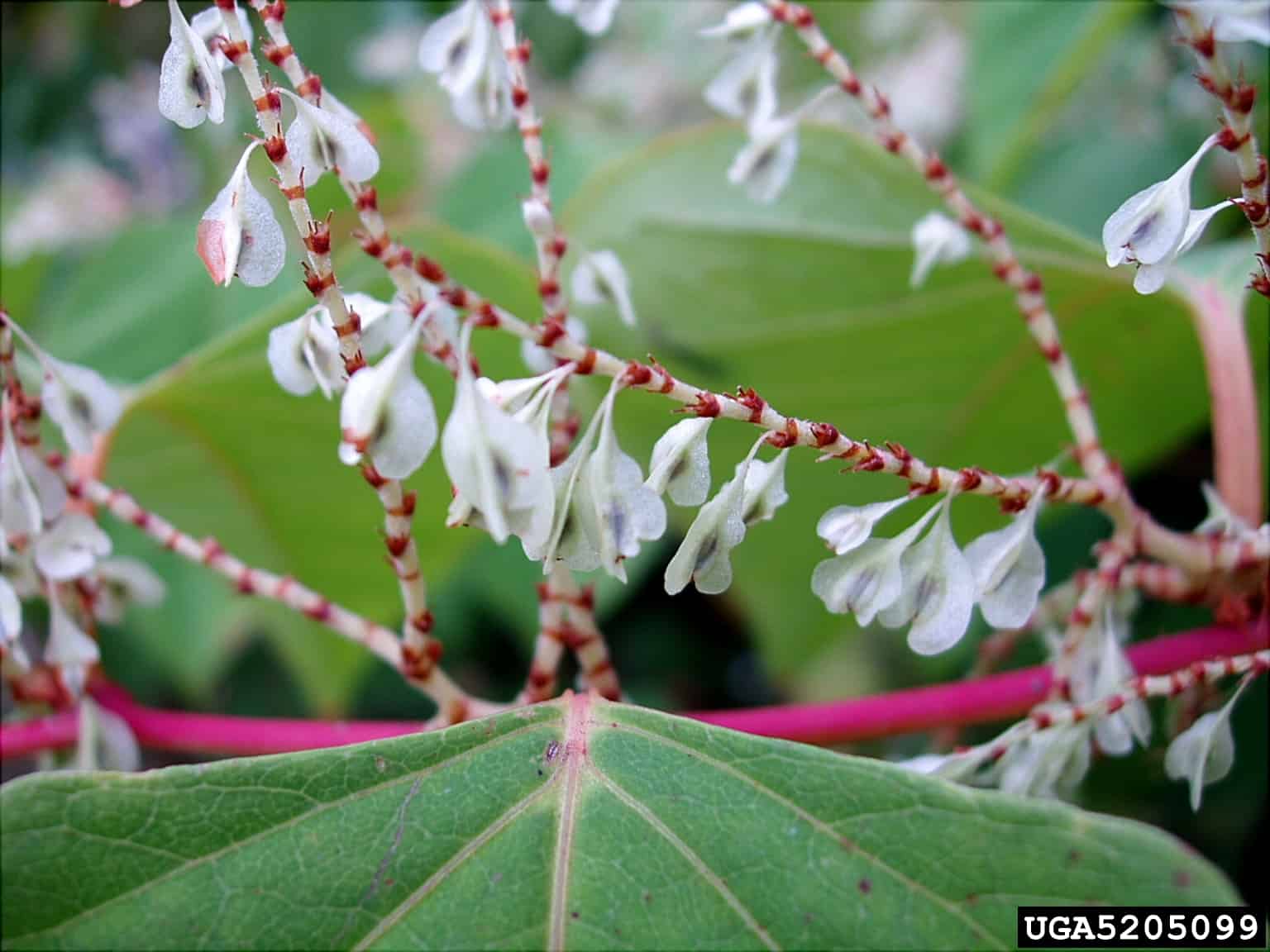
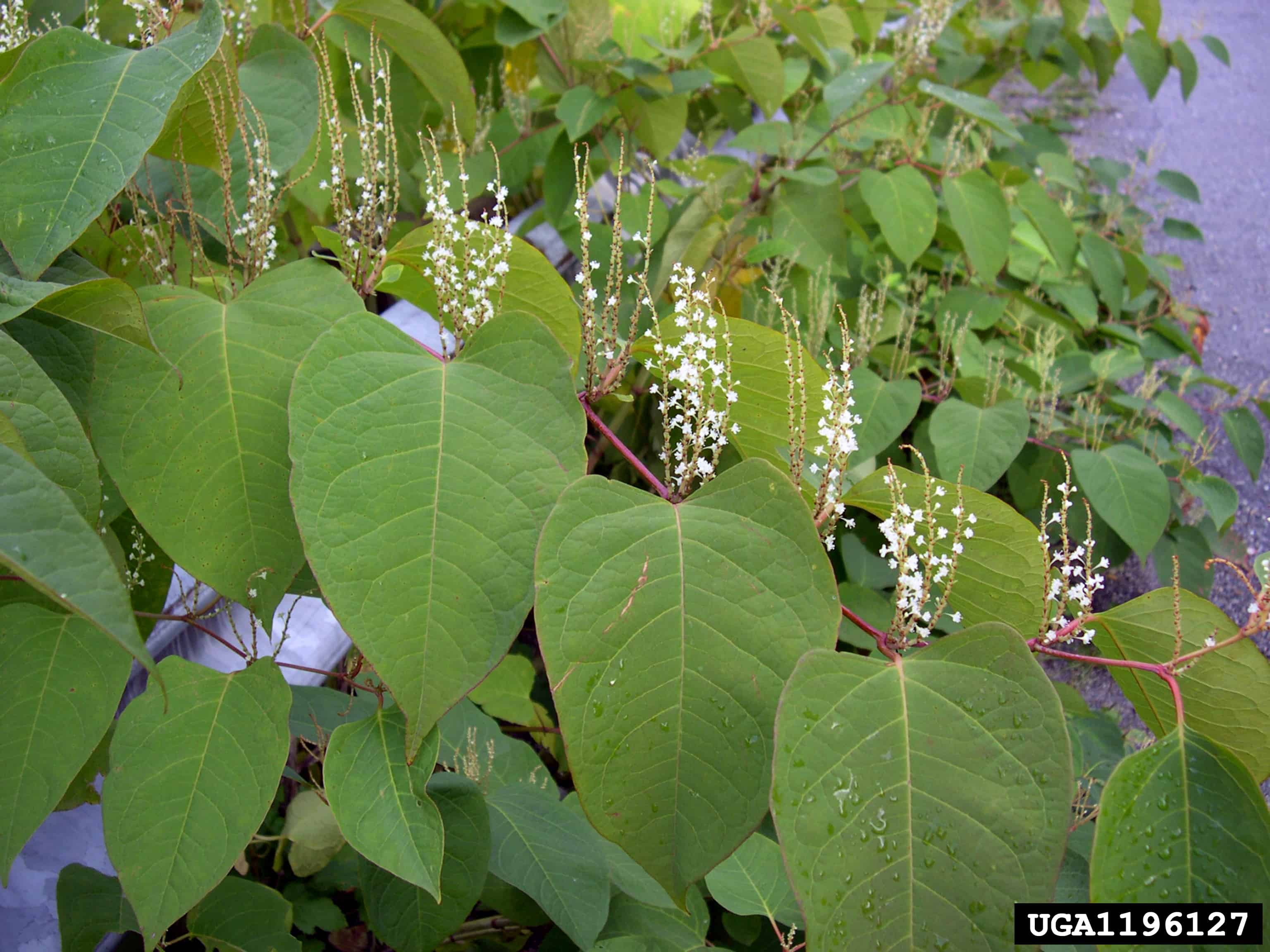
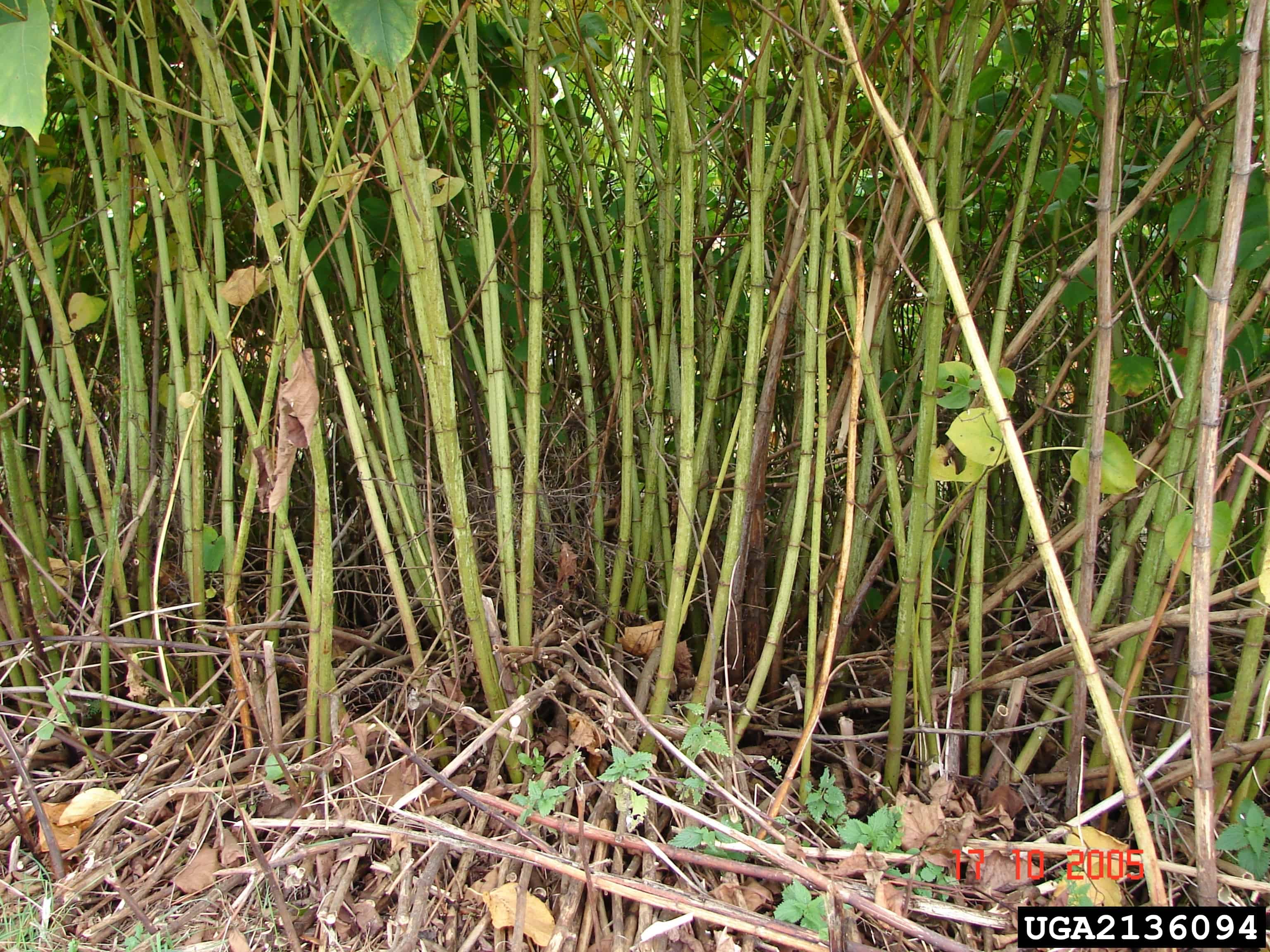
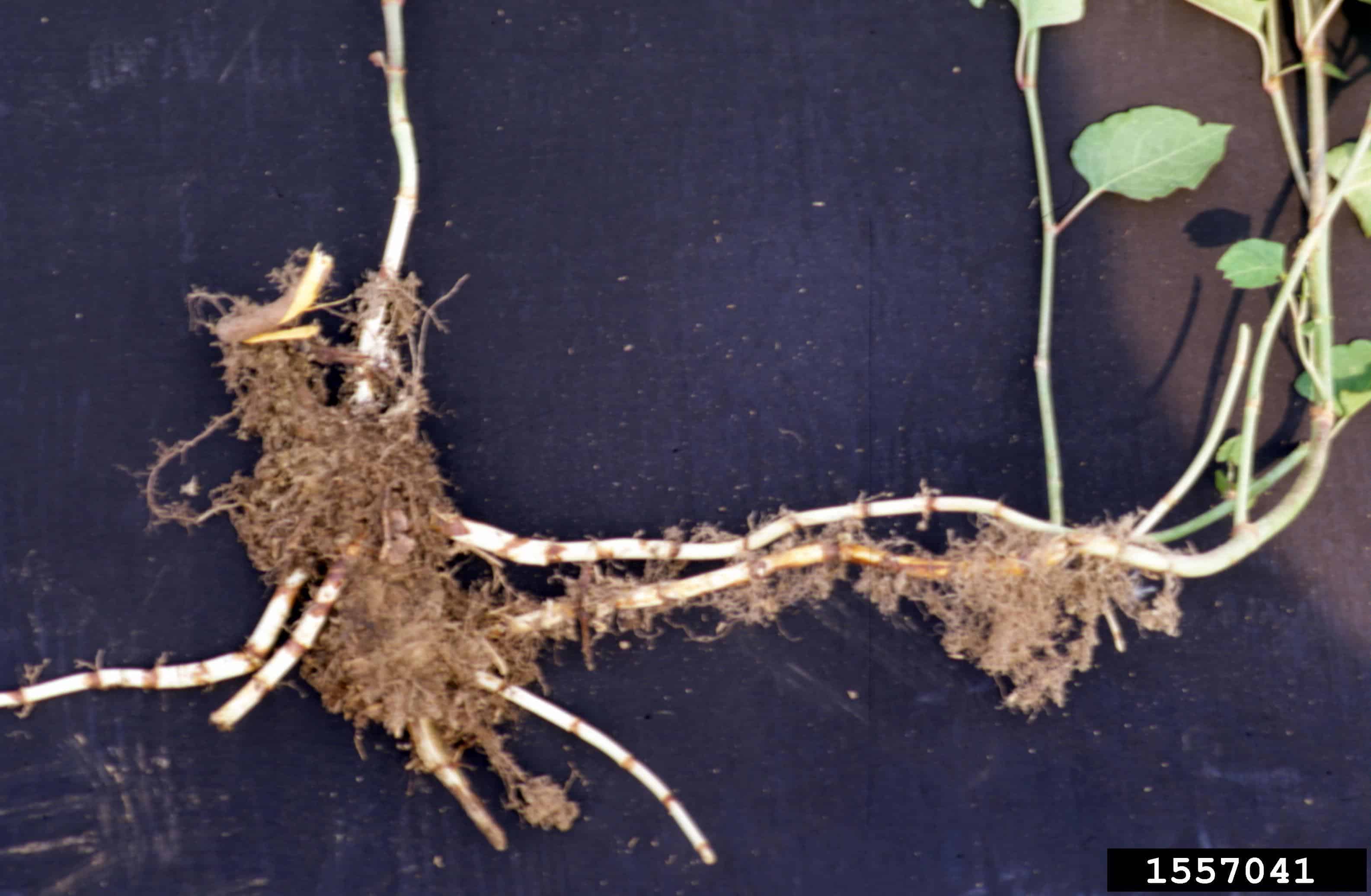
Similar Species
ESPÈCES SEMBLABLES
Similar species are based on a study of seed morphology of various species, and those with similar dispersal units are identified. The study is limited by physical specimen and literature availability at the time of examination, and possibly impacted by the subjectivity of the authors based on their knowledge and experience. Providing similar species information for seed identification is to make users aware of similarities that could possibly result in misidentification.
Reynoutria sachalinensis (giant knotweed)
Giant knotweed achenes are a similar trigonous shape with pointed ends, smooth, glossy surface and a medium brown colour. The perianth is a similar winged-trigonous shape, papery texture and light reddish brown colour as Japanese knotweed.
Giant knotweed achenes are generally larger (average length: 3.1 mm; average width: 1.5 mm) than Japanese knotweed, otherwise the perianth and achenes are very similar.
Click to select species
Cliquez pour sélectionner les espèces
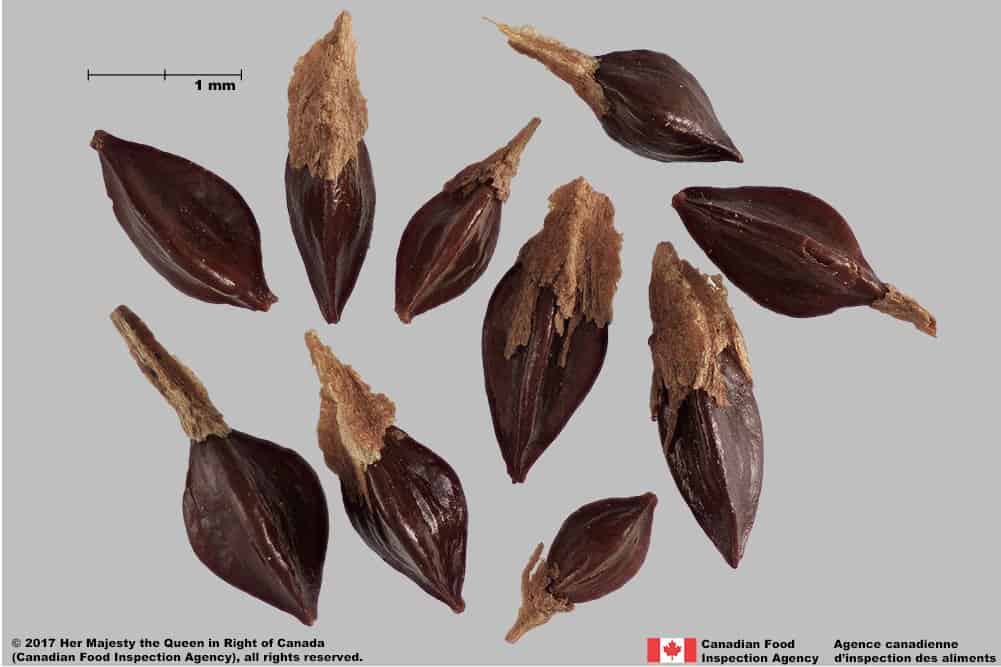
Reynoutria sachalinensis
Comparison Window
Fenêtre de comparaison
MAIN SPECIES
ESPÈCES PRINCIPALES
Reynoutria japonica

Reynoutria japonica
Polygonaceae
Japanese knotweed (Reynoutria japonica) perianths
MAIN SPECIES
ESPÈCES PRINCIPALES
Reynoutria japonica

Reynoutria japonica
Polygonaceae
Japanese knotweed (Reynoutria japonica) achenes
MAIN SPECIES
ESPÈCES PRINCIPALES
Reynoutria japonica

Reynoutria japonica
Polygonaceae
Reynoutria japonica perianths and achene
MAIN SPECIES
ESPÈCES PRINCIPALES
Reynoutria japonica

Reynoutria japonica
Polygonaceae
Reynoutria japonica perianth
MAIN SPECIES
ESPÈCES PRINCIPALES
Reynoutria japonica

Reynoutria japonica
Polygonaceae
Japanese knotweed (Reynoutria japonica) achene
MAIN SPECIES
ESPÈCES PRINCIPALES
Reynoutria japonica

Reynoutria japonica
Polygonaceae
Japanese knotweed (Reynoutria japonica) achene
SIMILAR SPECIES
ESPÈCES SEMBLABLES
Reynoutria sachalinensis

Reynoutria sachalinensis
Polygonaceae
Giant knotweed (Reynoutria sachalinensis) achenes
SIMILAR SPECIES
ESPÈCES SEMBLABLES
Reynoutria sachalinensis
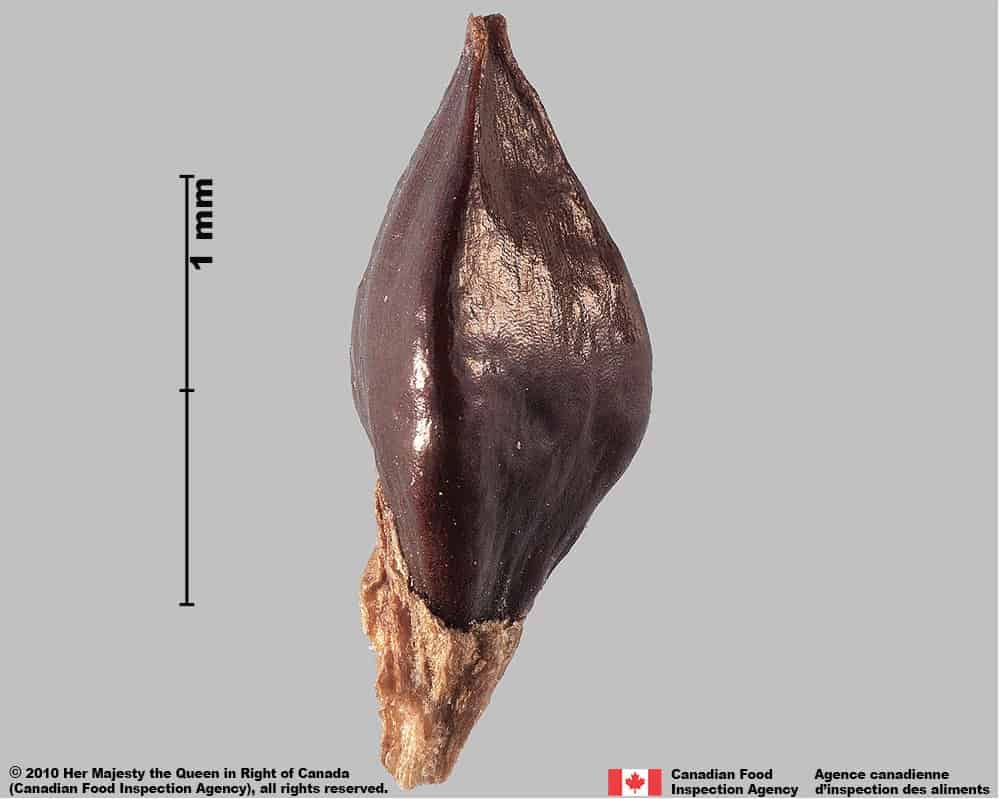
Reynoutria sachalinensis
Polygonaceae
Giant knotweed (Reynoutria sachalinensis) achene
SIMILAR SPECIES
ESPÈCES SEMBLABLES
Reynoutria sachalinensis
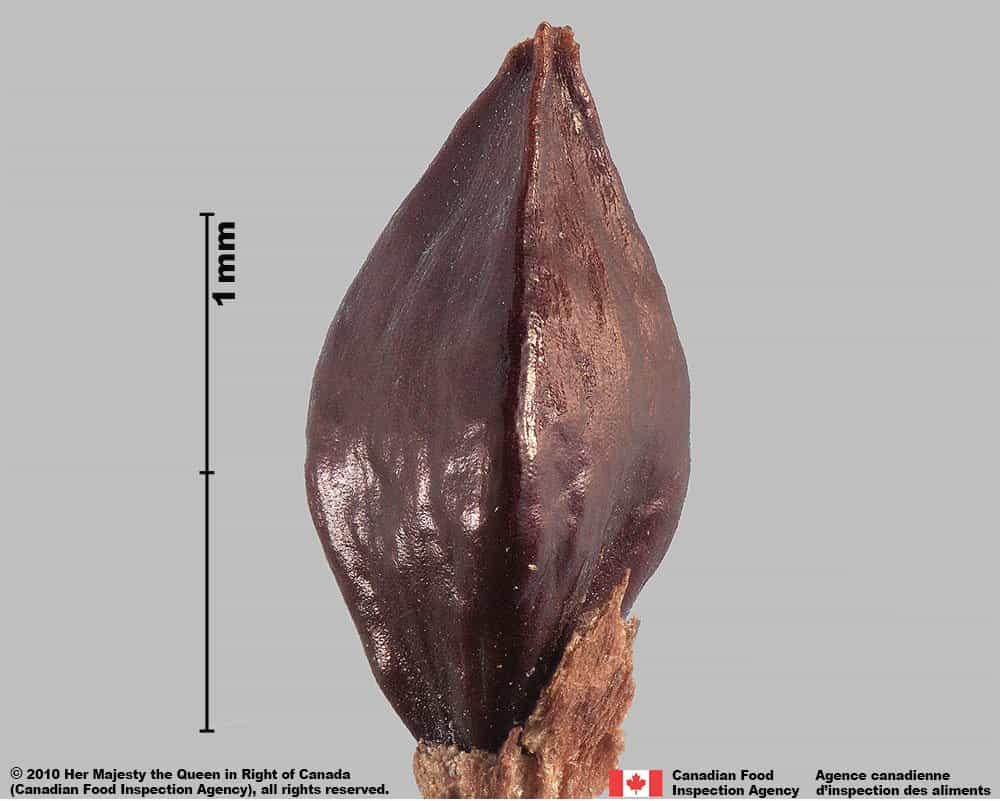
Reynoutria sachalinensis
Polygonaceae
Giant knotweed (Reynoutria sachalinensis) achene
Need ID Help?
Besoin d’aide pour l’identification?
Reference(s)
Référence(s)
Barney, J.N., Tharayil, N.m DiTommaso, A. and Bhowik, P. 2006. The Biology of Invasive Alien Plants in Canada. 5. Polygonum cuspidatum Sieb. & Zucc. [=Fallopia japonica (Houtt.) Ronse Decr. Canadian Journal of Plant Science 86: 887-905.
Brouillet, L., Coursol, F., Meades, S. J., Favreau, M., Anions, M., Bélisle, P. and Desmet, P. 2010+. VASCAN, the database of vascular plants of Canada. http://data.canadensys.net/vascan/ Accessed April 25, 2017.
Darbyshire, S. J. 2003. Inventory of Canadian Agricultural Weeds. Agriculture and Agri-Food Canada, Research Branch. Ottawa, ON.
Flora of North America (FNA) Editorial Committee, eds. 1993+. Flora of North America North of Mexico [Online]. 22+ vols. New York and Oxford. http://beta.floranorthamerica.org. Accessed April 25, 2017.
Flora of North America (FNA) Editorial Committee, eds. 1993+. Flora of North America North of Mexico [Online]. 22+ vols. New York and Oxford. Accessed December 29, 2022.
Global Biodiversity Information Facility (GBIF) Secretariat. 2022. https://doi.org/10.15468/39omei Accessed via https://www.gbif.org/species/2889173 Accessed December 29, 2022.
U.S. Department of Agriculture-Agricultural Research Services (USDA-ARS). 2017. Germplasm Resources Information Network (GRIN), https://npgsweb.ars-grin.gov/gringlobal/taxon/taxonomysearch Accessed April 25, 2017.
U.S. Department of Agriculture-Natural Resources Conservation Service (USDA-NRCS). 2017. The PLANTS Database. National Plant Data Team, Greensboro, NC USA. https://plants.usda.gov/home Accessed April 25, 2017.



